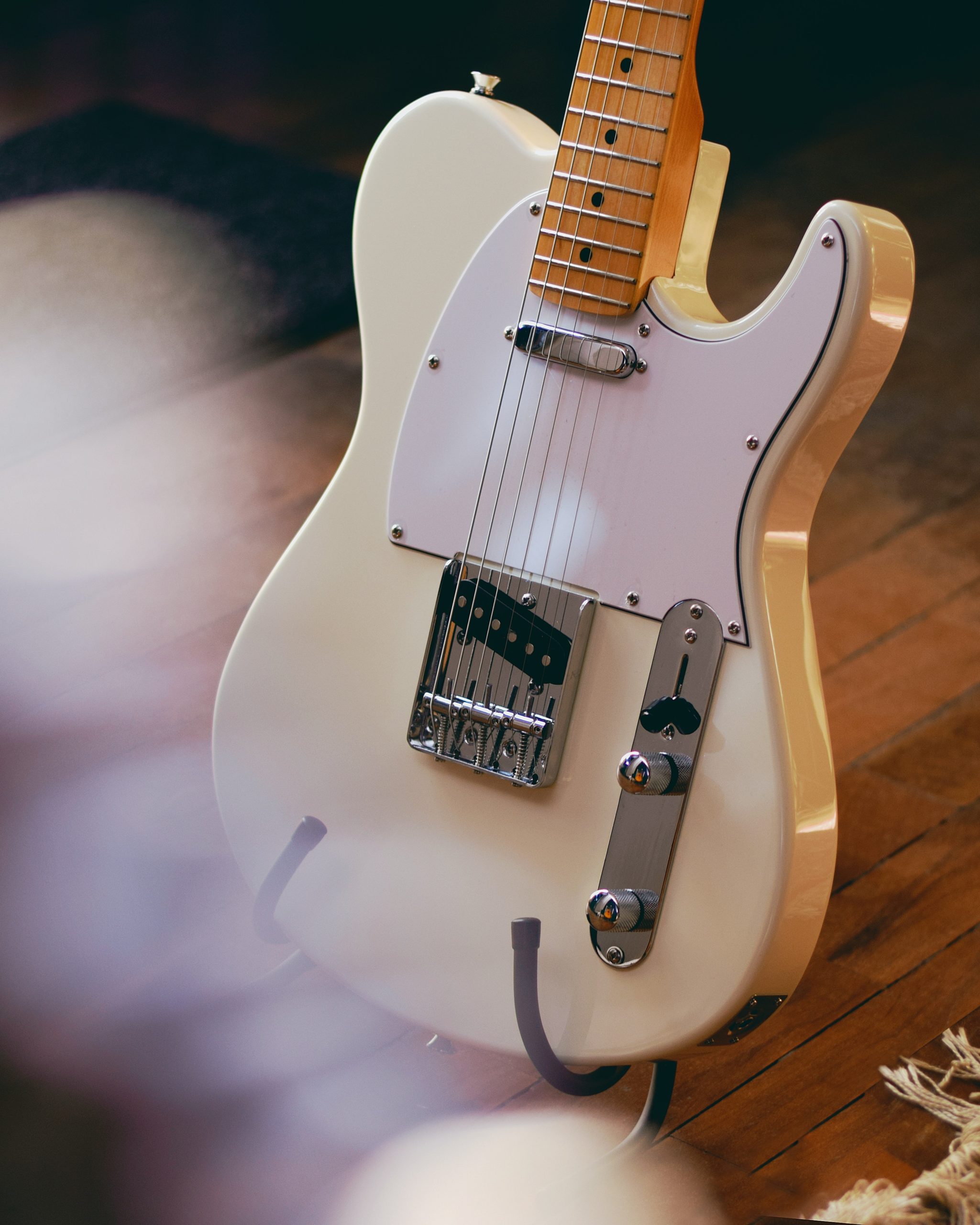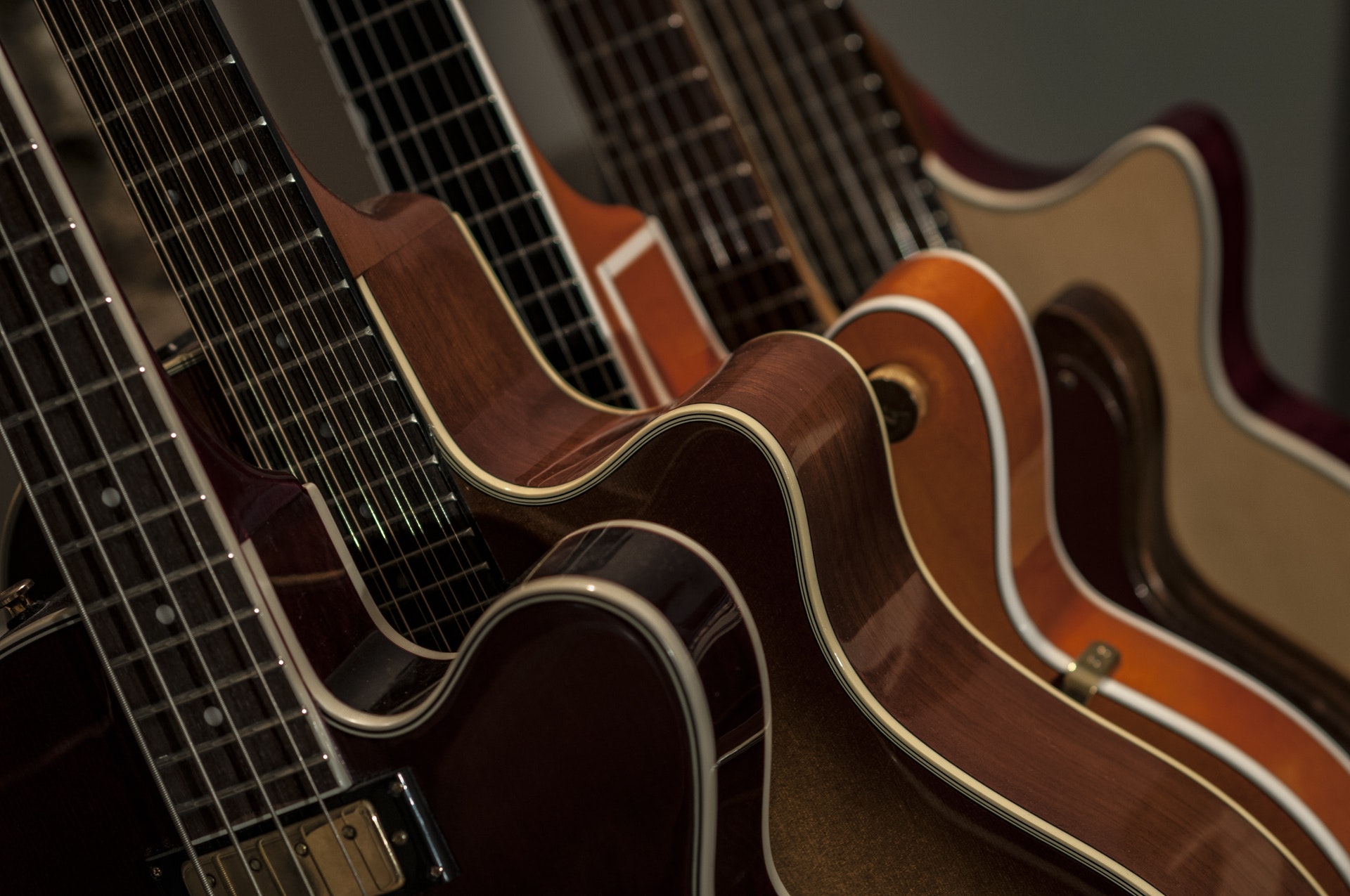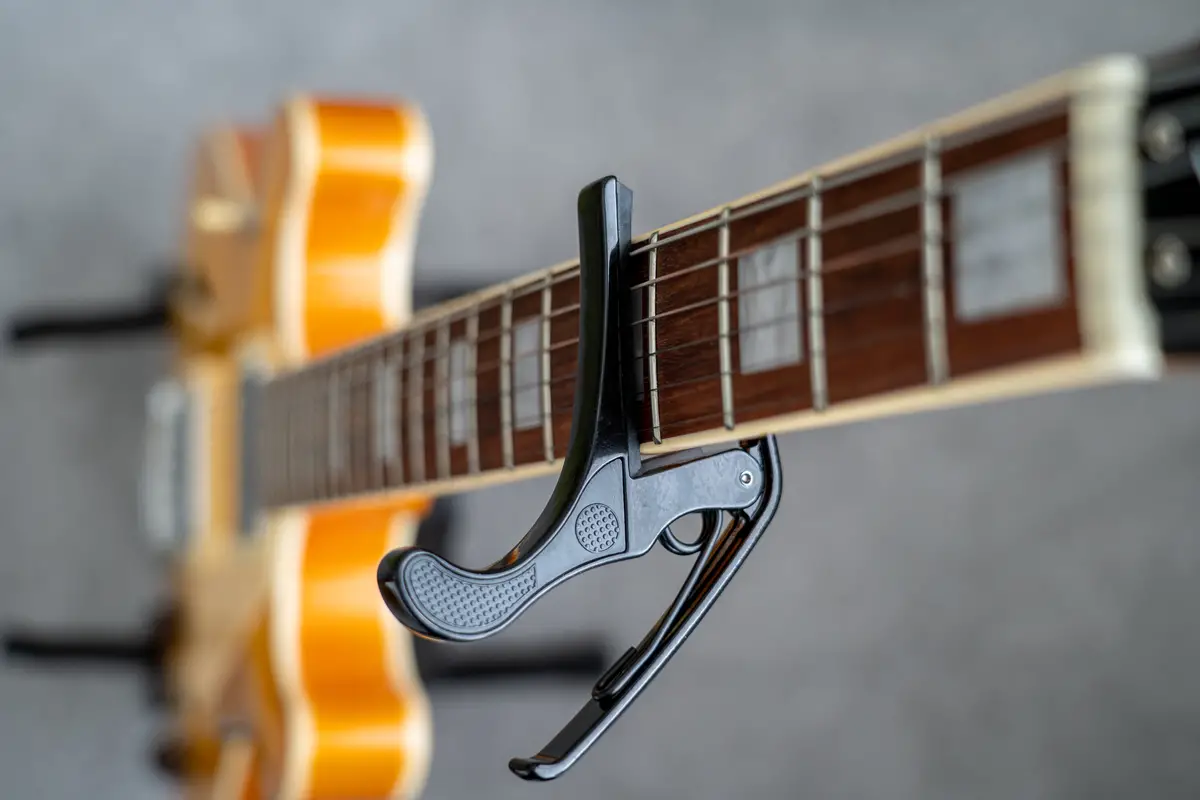Bridge vs Neck Pickups – Pros, Cons, and Differences
Pickups are to electric guitars are what sound holes are to acoustic guitars. These electronic rectangles sit below the fretboard and capture the notes as you strum or pick.
Pickups are everything when it comes to tone.
But what’s the difference between bridge and neck pickups? On an electric guitar, a neck pickup rests approximately one inch beneath the fretboard, also known as the neck. The bridge pickup is the farthest from the neck, near the bridge (where the “whammy bar” resides).
But there’s more to bridge and neck pickups beyond location. Where they’re placed has a notable impact on tone. Read on to learn all about how they vary.
What is a Bridge Pickup?
It’s simple – a bridge pickup is closest to the bridge. Reminder: the bridge is the piece of metal from which the strings emerge.
A bridge pickup “listens” to the vibrations on the lowest parts of a guitar’s strings. Tension is highest here, which helps give the bridge pickup its hard and punchy tone.
Additionally, engineers design each bridge pickup to produce more volume. Combined with location and string tension, this gives a bridge pickup its signature sound.
In short, a bridge pickup is heavy, bright, and twangy. It’s great for hard rock and heavy metal rhythm guitar riffs. Furthermore, a bridge pickup is happily distorted and goes well with high gain.
What is a Neck Pickup?
Like a bridge pickup, the neck pickup is intuitively named, as it’s right beneath the neck.
Because a bridge pickup is located near the middle of the strings, where tension is lowest, it’s more sensitive to slight movements. Consequently, the sound isn’t as sharp here as near the bridge.
Instead, the neck pickup excels at picking up nuance. It also offers a softer tone (again, because of lower string tension), which compliments jazz, pop, R&B, and other “light” genres.
Furthermore, the pickup itself is less sensitive than the bridge pickup. This is because more vibration means more noise near the neck. Dialing back the output ensures consistent volume as you switch between the neck and bridge.
Pros and Cons of Bridge Pickups
Guitar designers know that bridge and neck pickups have specific drawbacks. Thus, each pickup is a solution to the other one. Understanding their strengths and weaknesses lets you know which will offer the best sound in certain circumstances.
Let’s begin with the bridge pickup. When should you use it?
Pros of Bridge Pickups
Here are some instances where bridge pickups excel:
- Playing low notes
- Hard rock and heavy metal riffs
- Utilizing harmonics
- Prolonged sustain
- Dirty, distorted tones
Cons of Bridge Pickups
And here are some instances where bridge pickups are not so great:
- Clean, acoustic-like tones
- Strumming full chords
- Playing smooth jazz (or any smooth type of music)
Ultimately, bridge pickups sound bold and harsh. Depending on how you play, this could be a dream or a nightmare. Fortunately, a more pleasing alternative exists for those in the “this is horrible” camp.
Pros and Cons of Neck Pickups
Neck pickups succeed, whereas bridge pickups fail. They offer a neutral sound that acoustic guitar players will be more familiar with. But, of course, they also have their downsides — which tend to be the things that bridge pickups do well.
Pros of Neck Pickups
Neck pickups are phenomenal when you’d like to:
- Play acoustic guitar songs on your electric
- Get a softer, more natural sound
- Strum complex chords
- Perform a graceful solo.
Cons of Neck Pickups
Alas, neck pickups are admittedly mediocre when it comes to:
- Playing harmonics
- Aggressive power chords
- Getting a full sound from a single note
- Being super emphatic.
But you know what’s great at these things? You got it.
Your ear is the best judge. If you’re unsure if you should switch pickups, trust your intuition.
For example, if you feel like your guitar is stabbing you in the ears with its tone, switch to your neck pickup for the best results. On the other hand, if you seek a little more edge to your playing, try the bridge pickup.
Finally, become comfortable with flipping the switch as you play. If you want the best tone, you must set yourself up to get it. The right pickup compliments what you’re playing, while the wrong one can ruin your experience and even your confidence.
Why do Electric Guitars Have Multiple Pickups?
Most electric guitars have two or four pickups.
For example, an early Gibson Les Paul has a bridge and neck pickup. Meanwhile, a (typical) Fender Stratocaster has a neck, middle, and bridge pickup. However, you’ll find a lot of variations to this, even within the same line of guitars.
Why isn’t one pickup enough? Guitarists crave flexibility. Switching between the neck and bridge pickup, or using both simultaneously, allows you to change your tone.
Most guitars have a small lever to switch between them or combine them. This makes it easy to change the sound when transitioning from strumming chords to playing lead.
What’s the difference between humbucker and single-coil pickups?
“Humbucker” and “single-coil” refer to the technology within pickups.
Single-coil pickups have been around since the invention of electric guitars. They generate sound through a single electric coil, hence the name. Many players love them thanks to their clear, crisp tones. As a result, fender continues to put them in their iconic Stratocasters.
Guitar brands Gibson and Gretsch introduced humbucker pickups in the 1950s to “buck the hum” of single coils. They feature a double coil design to significantly reduce unwanted noise and humming.
Surprisingly, both single coil and humbucker pickups remain common. Single-coil pickups are popular for country, folk, and jazz artists who want the cleanest tones possible. Meanwhile, humbucker pickups have a warmer tone that compliments the blues, rock, and heavy metal.
But both pickup types can excel in any genre. Single coil pickups are the best if you don’t mind some feedback and want something clean and twangy. However, humbuckers deliver a full, round tone that goes great with heavy music. They each have distinct strengths and weaknesses, like bridge and neck pickups.
If you can afford it, why not try both?
What’s the difference between active and passive pickups?
Another distinction when talking about guitar pickups is the passive and active types. This isn’t about how they deal with conflict.
Passive pickups are vastly more common than active pickups. They are called passive because they require no external power. All you need to do is plug your guitar into an amp and start playing. Additionally, passive pickups were the only option before the 1980s.
EMG created active pickups in the 1980s to deliver superior tones while cutting unwanted noise. Unlike passive pickups, they require a power supply – like condenser mics – to produce sound. A 9-volt battery is a common power source.
Despite the relative newness of active pickups, many guitarists don’t believe they are any better than passive pickups. Some say they’re far inferior.
On the other hand, plenty of guitarists say that active pickups are worth it. Yes, you must remember to replace or charge your guitar’s battery. But having more dynamic tones while not worrying about buzzing or electronic feedback can be a blessing.
How do I switch between pickups?
You can switch pickups by flipping the small lever on your guitar (not the whammy bar, just FYI). But how do you know which pickup is active?
The rightmost position is the bridge pickup on most guitars, including the Fender Stratocaster. The leftmost position is the neck pickup. If applicable to your guitar, the middle position is the middle pickup.
Many guitars also have incremental positions. For example, a modern Strat has five positions for the neck pickup only, neck and middle pickups, middle pickup only, middle and bridge pickups, and bridge pickup only.
Combining multiple pickups allows you to mix tones, yielding unique sounds distinct from the bridge and neck pickups alone.
Conclusion
Bridge and neck pickups offer different sounds and unique playing experiences. Because each type has particular strengths and weaknesses, guitar manufacturers usually include at least a bridge and neck pickup.
The neck pickup, located beneath the neck of an electric guitar, offers a clean and pure tone. It’s great for mellow melodies and strumming chords. Meanwhile, a bridge pickup gives you a fierce sound perfect for heavy metal and other intense musical styles.
Nevertheless, metal guitarists use neck pickups all the time, and jazz guitarists aren’t going to say no to the fat, round tones of a bridge pickup. Besides, many guitarists end up flip-flopping between them, anyway.
Remember, there’s plenty of variety in the guitar world. Swapping between pickups or replacing them with humbuckers or active ones is a great way to find your perfect sound.









